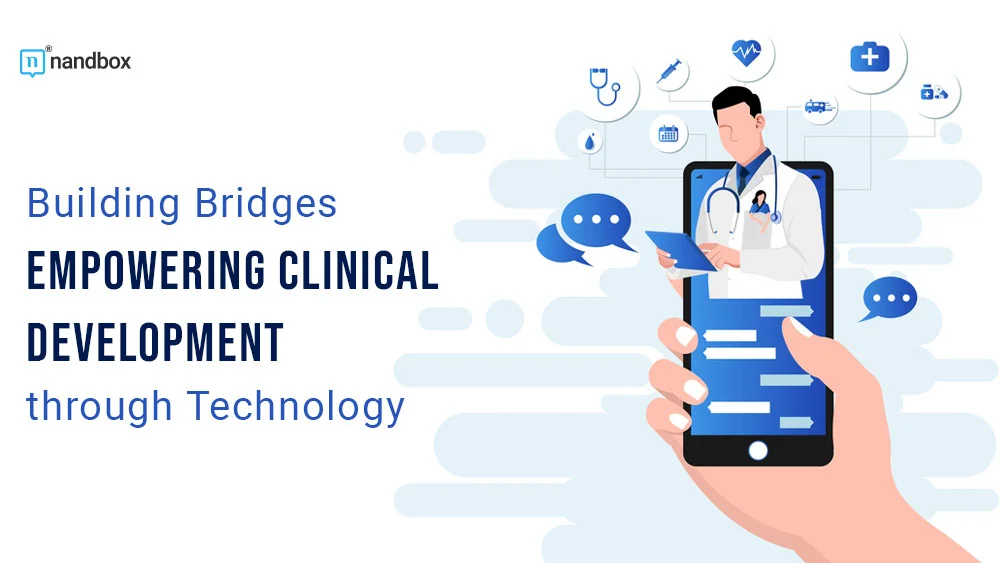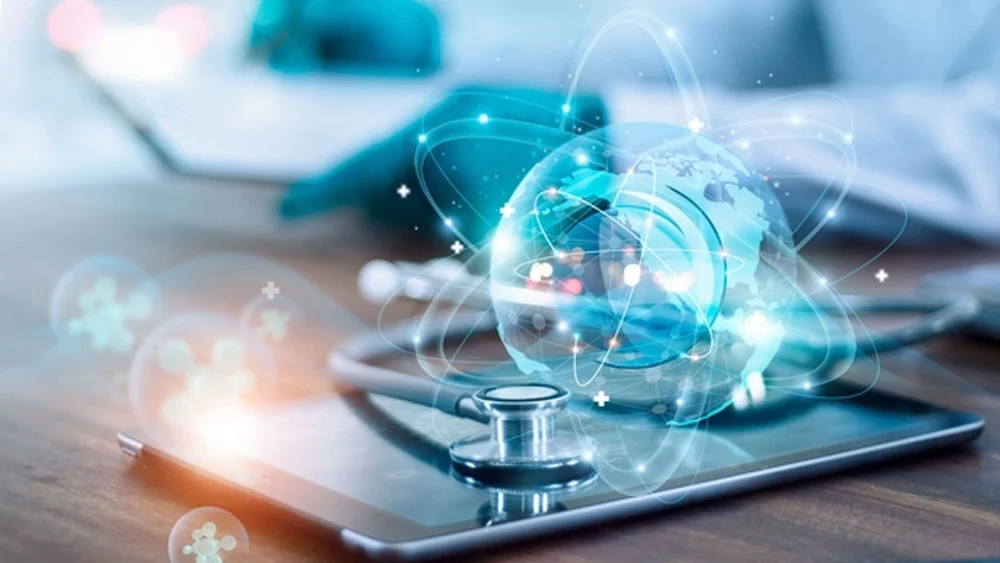In the field of healthcare and medicine, clinical development plays a crucial role in advancing medical treatments and improving patient outcomes.
To enhance the efficiency and effectiveness of clinical development programs, the integration of technology has become increasingly important.
The Role of Technology in Clinical Development
Technology has revolutionized various aspects of clinical development, offering numerous benefits to researchers, healthcare professionals, and patients. Clinical development programs are necessary because clinicians need the right tools to gain confidence and competence in patient care.
Here are some key ways in which technology empowers clinical development:
Streamlining Data Management
Electronic Data Capture (EDC)
EDC systems replace traditional paper-based data collection methods, allowing for more efficient and accurate data capture. Researchers can enter, manage, and analyze data in real-time, improving data quality and reducing the risk of errors. With EDC:
- Data can be captured directly at the point of care, eliminating the need for manual transcription and reducing data entry errors. This shift towards digital data capture enhances the potential for rapid clinical guidance, enabling healthcare professionals to make informed decisions swiftly and accurately, further streamlining patient care processes.
- Real-time data validation checks help ensure the completeness and accuracy of data, improving the overall quality of clinical trial data.
- Researchers can remotely monitor data and identify trends or outliers early, enabling timely interventions or protocol modifications.
Electronic Health Records (EHR)
EHR systems centralize patient health information, providing a comprehensive view of a patient’s medical history. This streamlines the clinical development process by facilitating data access, collaboration, and analysis. With EHR:
Researchers can access relevant patient information, such as demographics, medical history, and laboratory results, to facilitate patient selection and recruitment for clinical trials.
EHR integration with clinical trial management systems enables seamless data exchange, allowing researchers to gather real-time patient data directly from electronic health records.
Collaborative platforms within EHR systems facilitate communication and data sharing among multidisciplinary teams involved in clinical development.
- Clinical Trial Management Systems (CTMS): CTMS software helps streamline the management of clinical trials, enabling efficient planning, tracking, and reporting of study activities. CTMS offers several advantages:
- Streamlined study planning and tracking: CTMS enables researchers to manage study timelines, track recruitment progress, monitor site performance, and ensure compliance with regulatory requirements.
- Efficient resource management: CTMS facilitates the allocation of personnel, supplies, and equipment, ensuring the smooth execution of clinical trials.
- Enhanced collaboration and communication: CTMS platforms provide centralized communication channels, document repositories, and task management tools, fostering collaboration among research teams and sponsors. Improved finances: Some EHRs include revenue cycle management (RCM) capabilities that will help you maintain income stability. With these features, you’ll see an improvement in fast turnaround on denials, clean claim rates, and cash in your pocket.
Enhancing Patient Recruitment and Engagement
Online Recruitment Platforms
- Technology allows researchers to reach a broader pool of potential study participants through online recruitment platforms. These platforms use targeted advertisements, social media, and patient databases to connect eligible individuals with clinical trials. Benefits include:
Increased accessibility
Firstly, online recruitment platforms break down geographical barriers, reaching potential participants regardless of their location, making it easier to recruit diverse study populations. Additionally, the integration of advanced imaging techniques and radiological technologies in clinical trials underscores the need for highly trained professionals. In this context, comprehensive bachelor’s degree programs in radiology equip healthcare professionals with the necessary skills to effectively utilize these technologies, enhancing the precision and efficacy of patient care and research outcomes. Such educational pathways are pivotal in ensuring that the workforce is prepared to meet the evolving demands of clinical development and patient management.
Targeted outreach
Additionally, advanced algorithms can match potential participants with relevant clinical trials based on their demographics, medical history, or specific conditions of interest, increasing the likelihood of finding eligible candidates.
Streamlined pre-screening processes
Moreover, online questionnaires and pre-screening tools can efficiently assess participants’ eligibility, saving time and resources for both researchers and potential participants.
Telemedicine and Remote Monitoring
Furthermore, remote technologies enable virtual visits and remote monitoring of patients, reducing the need for frequent in-person visits. This improves patient engagement and retention in clinical trials, particularly for those who face geographic or mobility barriers. Key advantages include:
Increased convenience and accessibility
Moreover, patients can participate in clinical trials from the comfort of their homes, reducing the burden of travel and associated costs.
Real-time data collection
Additionally, remote monitoring devices and wearable sensors allow researchers to collect patient data, such as vital signs, physical activity, or medication adherence, in real-time, enabling continuous monitoring and timely interventions.
Enhanced patient engagement
Lastly, telemedicine platforms facilitate regular communication between patients and healthcare providers, fostering a sense of support and engagement throughout the clinical trial process.
Enabling Real-Time Data Analysis and Insights
AI algorithms can analyze vast amounts of clinical data to identify patterns, predict outcomes, and assist in decision-making. Machine learning models can aid in the identification of patient cohorts and optimize clinical trial designs.
Data-driven decision-making
AI algorithms can analyze complex datasets, identify correlations, provide insights to support treatment decisions, optimize trial protocols, and improve patient outcomes.
Predictive modeling
Machine learning models can forecast patient responses to treatments, helping researchers identify patient populations that may benefit most from a specific intervention.
Efficient data analysis
AI-powered algorithms can process large datasets rapidly, reducing the time and effort required for manual data analysis.
Real-Time Monitoring and Data Analytics
Furthermore, Technology allows for continuous monitoring and analysis of patient data during clinical trials. This enables researchers to identify potential adverse events, make timely adjustments to protocols, and ensure patient safety. Benefits include:
- Early detection of adverse events: Real-time monitoring allows prompt identification of safety concerns, protecting participants.
- Timely protocol modifications: Real-time data analysis enables identification of trends and necessary protocol modifications to enhance patient outcomes.
- Improved safety and efficiency: Real-time data analytics proactively manage risks and optimize trial conduct.
- Technology empowers clinical development by streamlining data management, enhancing patient recruitment and engagement, and enabling real-time analysis and insights.
By leveraging technology effectively, clinical researchers can accelerate the development of innovative treatments, improve patient care, and ultimately advance the field of medicine.
The Future of Technology in Clinical Development
As technology continues to advance, the future of clinical development holds immense potential. Here are some emerging trends and possibilities:
Wearable Devices and Sensors
In addition to that, wearable devices, sensors, and the resperate device provide real-time monitoring of patient health indicators, such as heart rate, blood pressure, and activity levels. As a result, this data can support remote patient monitoring, early detection of adverse events, and personalized medicine approaches.
Big Data and Precision Medicine
Big data analytics can harness vast amounts of healthcare data, including genomic information, clinical records, and population health data. This can lead to the development of personalized treatment strategies and targeted therapies based on individual patient characteristics.
Virtual and Augmented Reality
Virtual and augmented reality technologies offer immersive experiences that can aid in medical training, surgical simulations, patient education, and medical device testing. They allow for thorough and interactive evaluations of new devices in simulated clinical settings. These technologies have the potential to enhance clinical development programs by providing realistic and interactive learning environments.
Endnote
Technology has become an invaluable tool in empowering clinical development programs, revolutionizing data management, patient recruitment, and real-time data analysis.
As technology continues to evolve, the future holds even more possibilities for advancing medical research, personalized treatments, and patient care.
Overall, By leveraging technology effectively, we can build bridges between research and clinical practice, ultimately improving healthcare outcomes and transforming the landscape of medicine.





